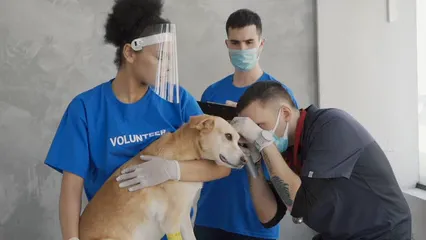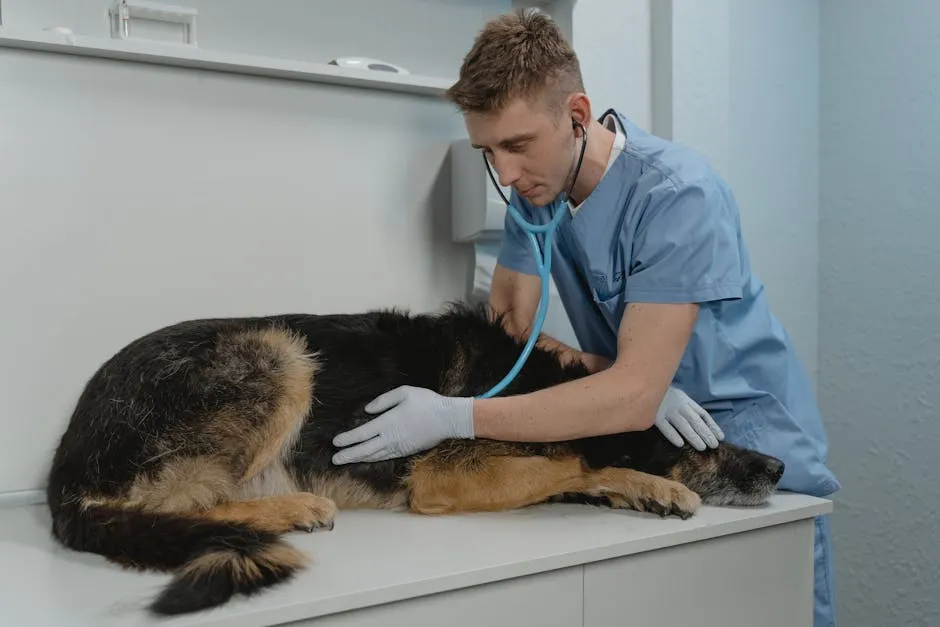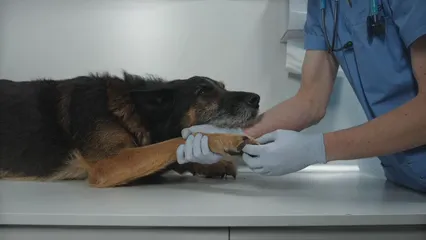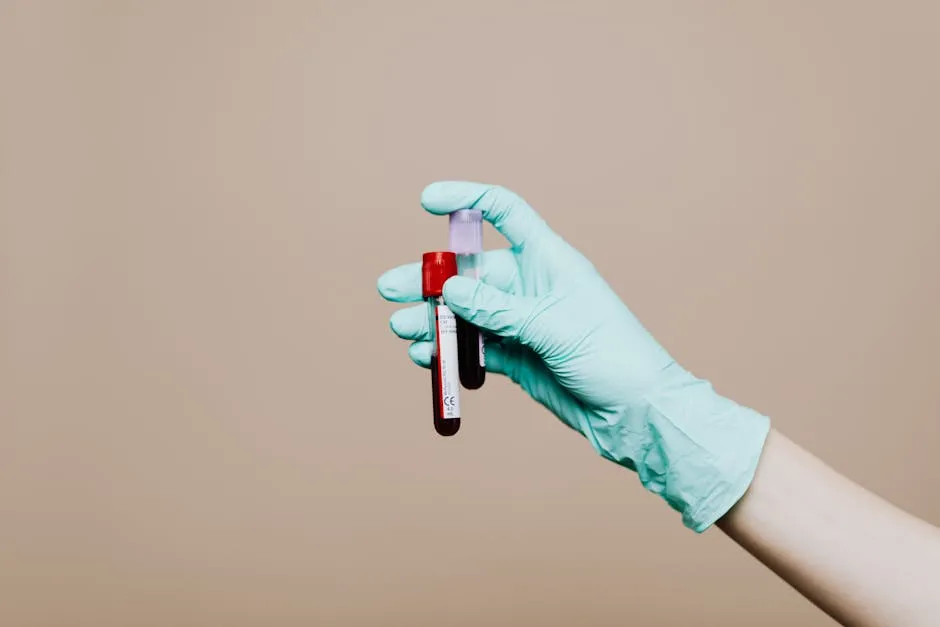Introduction
Pyometra is a serious condition affecting unspayed female dogs. This infection can be life-threatening, requiring immediate veterinary intervention. If you notice any signs, don’t wait. Early treatment can save your dog’s life. This article aims to provide you with essential information about pyometra, including its causes, symptoms, and preventative measures.
Understanding how to manage the introduction of dogs and babies can be crucial for a harmonious household. tips on ensuring a smooth introduction between dogs and babies 2024
Speaking of harmony, have you ever considered how to keep your fur baby safe while recovering from surgery? A Dog Elizabethan Collar can help prevent your dog from licking their incision site, ensuring a speedy recovery while keeping them comfortable. It’s a must-have for post-surgery care!

Summary and Overview
Pyometra is a uterine infection common in female dogs, particularly those that are unspayed. It can manifest in two forms: open and closed. In open pyometra, the cervix remains open, allowing pus to drain from the vagina. Closed pyometra, however, occurs when the cervix is closed, trapping the infection inside the uterus and creating a more dangerous situation. The hormonal changes during a dog’s reproductive cycle play a critical role in the development of pyometra. After a heat cycle, progesterone levels rise, thickening the uterine lining. This thickened lining can develop cysts, leading to a condition called cystic endometrial hyperplasia. During this time, bacteria, especially E. coli, can ascend from the vagina into the uterus, causing infection. Recognizing the symptoms early is vital. Symptoms may include lethargy, poor appetite, vomiting, and increased thirst. Prompt diagnosis and treatment are essential to avoid severe complications. Spaying your female dog eliminates the risk of pyometra, making it the best preventive measure. Don’t forget to stock up on a Dog First Aid Kit—because accidents happen, and being prepared is half the battle!
What is Pyometra?
Pyometra is a serious infection that affects the uterus of unspayed female dogs. It occurs when bacteria invade the thickened uterine lining, leading to pus accumulation. This condition is significant in veterinary medicine due to its prevalence and potential severity. Statistics indicate that up to 25% of unspayed female dogs may develop pyometra during their lifetime. Understanding this condition is crucial for maintaining reproductive health in dogs and preventing related canine diseases.
Causes of Pyometra
The primary cause of pyometra is hormonal changes during the heat cycle. Following estrus, progesterone levels rise, prompting the uterus to thicken in preparation for potential pregnancy. If pregnancy does not occur, this thickened lining can become cystic. Bacteria can then enter through the cervix, leading to infection. Certain medications, such as progesterone-based drugs, may also contribute to the risk. These hormonal imbalances create an environment conducive to infection, ultimately resulting in pyometra.Clinical Signs of Pyometra
Recognizing the clinical signs of pyometra is crucial for early intervention. Pyometra can be classified into two types: open and closed. Each type presents distinct symptoms.Open Pyometra
– Vaginal Discharge: A purulent discharge, which may be cream-colored or bloody, is the hallmark sign. – Fever and Lethargy: Affected dogs often show signs of fever and increased fatigue. – Poor Appetite: Loss of interest in food is common. – Increased Thirst: Excessive thirst and urination may occur as the body tries to flush out toxins.
Closed Pyometra
– No Vaginal Discharge: The cervix remains closed, trapping the infection inside, which can lead to more severe symptoms. – Abdominal Distention: The abdomen may appear swollen or painful due to fluid accumulation. – Severe Illness: Symptoms can escalate quickly, leading to vomiting, diarrhea, and depression. – Increased Thirst: Similar to open pyometra, increased thirst may occur as well.
| Clinical Signs | Open Pyometra | Closed Pyometra |
|---|---|---|
| Vaginal Discharge | Present | Absent |
| Abdominal Distention | Rare | Common |
| Fever | Common | Less common |
| Lethargy | Common | Common |
| Increased Thirst | Common | Common |
Diagnosis of Pyometra
Diagnosing pyometra requires a thorough evaluation by a veterinarian. The process typically involves several steps to confirm the condition.Physical Examination
The veterinarian will first conduct a physical examination. Observing signs such as vaginal discharge and abdominal swelling is essential.
Blood Tests
Blood tests play a crucial role in diagnosing pyometra. Elevated white blood cell counts indicate infection. Other tests may reveal changes in kidney function, often affected by toxins released from the infection.
Imaging Techniques
Imaging methods like X-rays and ultrasound are vital for confirming pyometra diagnosis. These techniques help visualize an enlarged, fluid-filled uterus, which is characteristic of the condition. Specific patterns in lab results, such as low urine specific gravity, may also indicate kidney involvement due to bacterial toxins. Additionally, monitoring your dog’s health with a Pet Thermometer can help you keep track of any unusual temperature changes during recovery.
Treatment Options for Pyometra
The preferred treatment for pyometra is an ovariohysterectomy, which involves the surgical removal of the uterus and ovaries. This procedure is crucial for several reasons.
Ovariohysterectomy
This surgery effectively removes the source of infection and prevents future occurrences. It is typically more complex than a routine spay due to the dog’s overall health condition.
Medical Management
While some may consider medical management with prostaglandins, this option carries significant risks. It can lead to complications like uterine rupture, especially in closed pyometra cases.Post-Surgery Complications
Complications can arise during and after surgery. Potential issues include infection, bleeding, or anesthetic complications. Close monitoring during recovery is essential to ensure a smooth healing process. Surgery remains the most effective way to treat pyometra and prevent life-threatening complications. Early intervention drastically improves the prognosis. If you’re concerned about your dog’s overall health, consider a Dog Supplements for Immune Support to strengthen their defenses.
Recovery and Aftercare
After your dog’s surgery for pyometra, follow these recovery steps closely. First, ensure your dog has a quiet area to rest. Limit their activity for at least two weeks. This helps prevent complications and promotes healing. Next, keep an eye on the surgical site. Check for swelling, redness, or discharge. If you notice any of these signs, contact your veterinarian immediately. It’s crucial to monitor your dog for other complications as well. Watch for signs like vomiting, lethargy, or changes in appetite. These could indicate serious issues. Additionally, keep track of their water intake and bathroom habits. Increased thirst or urination may signal a problem. Home care is essential for a smooth recovery. Administer any prescribed medications as directed. Use an Elizabethan collar to prevent licking at the incision site. This will help avoid infections and promote healing. Finally, maintain a calm environment. Stress can hinder recovery, so keep your dog comfortable and relaxed. Regular follow-up appointments with your vet are important to ensure your dog is healing properly. If you’re traveling with your dog, a Pet Carrier can help keep them safe and secure during the journey.
Prevention of Pyometra
Spaying is the most effective way to prevent pyometra. This procedure removes the uterus and ovaries, eliminating the risk of this life-threatening infection. The best time to spay your dog is before her first heat cycle, typically around six months of age. For breeding dogs, it’s crucial to consider the risks of pyometra. If breeding is planned, ensure to consult with your veterinarian about the best timing and practices to minimize risks. Regular veterinary check-ups are essential for monitoring your dog’s health. If you notice any changes in her behavior or health, consult your vet immediately. Proactive health management can prevent severe conditions like pyometra. And speaking of health, don’t forget to pamper your pooch with a Dog Bed that offers comfort and support for their joints!Conclusion
Pyometra is a serious condition that can have life-threatening consequences. Awareness is key for all pet owners, especially those with unspayed female dogs. If you notice symptoms such as lethargy, vomiting, or unusual discharge, seek veterinary help immediately. Spaying not only protects your dog against pyometra but also promotes long-term health. Encourage fellow dog owners to consider spaying as a preventive measure. Being informed and proactive can save lives. And as a bonus, don’t forget to keep your dog entertained with some Dog Puzzle Toys to stimulate their mind!FAQs
What breeds are more susceptible to pyometra?
Certain breeds may have a higher risk of developing pyometra. Breeds such as Golden Retrievers, Rottweilers, and Staffordshire Terriers are often mentioned. Generally, middle-aged or older female dogs face an increased risk, especially those that have gone through multiple heat cycles. Hormonal influences and genetic factors can also contribute to this condition. Monitoring your dog’s health and consulting with your vet can help mitigate risks.
How quickly does pyometra develop after a heat cycle?
Pyometra typically develops two to eight weeks after a heat cycle. During this period, the hormonal changes can create a favorable environment for bacterial growth. The rise in progesterone thickens the uterine lining, making it more susceptible to infections. If your dog shows signs of illness during this time, prompt veterinary attention is crucial.
Can a spayed dog get pyometra?
Yes, a spayed dog can develop a condition called stump pyometra. This occurs if some ovarian tissue remains after surgery. Hormones from this tissue can stimulate the uterine lining, leading to infection. Although rare, stump pyometra can be serious and requires veterinary intervention. If you suspect this condition, consult your veterinarian immediately.
What should I do if I suspect my dog has pyometra?
If you suspect your dog has pyometra, contact your veterinarian right away. This condition is a medical emergency. Signs include lethargy, vomiting, and abnormal discharge. Quick action is essential for the best outcome. Don’t delay; your dog’s health depends on prompt veterinary care.
Are there any long-term effects of pyometra treatment?
Post-treatment complications can arise, including infection or issues related to anesthesia. Some dogs may face challenges in recovery, especially if they had severe infections. It’s essential to follow your veterinarian’s aftercare instructions closely. Regular follow-ups can help ensure your dog heals properly and remains healthy.
How much does pyometra treatment typically cost?
Treatment for pyometra can vary significantly based on your location and the dog’s health. Costs often range from several hundred to a few thousand dollars. This includes surgery, hospitalization, and medications. Discuss costs openly with your veterinarian to understand what to expect and how to budget for your pet’s health.
Is there a way to treat pyometra without surgery?
While some may consider medical management, it is generally not recommended. Treatments using prostaglandins can be risky, particularly for closed pyometra. Surgery remains the most effective and safest option for treating this serious condition. Always consult your vet for the best course of action.
All images from Pexels





